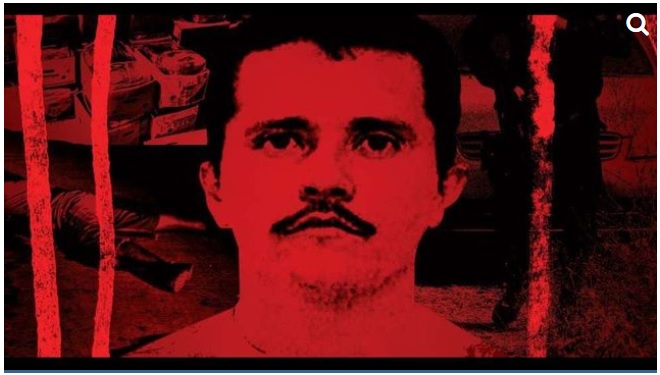GUADALAJARA, Mexico — Sometimes, the decapitated bodies are hanging from bridges. Other times, the mutilated torsos are just discarded on the street. Often, the carnage comes with a calling card: “CJNG” in scrawled lettering.
The Cartel Jalisco Nueva Generación likes to send a message.
To those who have been tracking the resurgence of the Mexican drug war in the last few years, the cartel’s rise is particularly troubling — it is as brazen as it is ruthless. The Drug Enforcement Administration now believes the CJNG is responsible for tons of meth and fentanyl flowing into the United States each month.
“CJNG is our No. 1 priority right now,” said Bill Bodner, the special agent in charge of the DEA’s Los Angeles field division, who oversees a group of agents specifically tasked with tracking down the cartel’s leader.
Still, that man — Nemesio Rubén Oseguera Cervantes, known as “El Mencho” — has successfully eluded U.S. federal authorities so far.
Multiple American and Mexican law enforcement officials tell NBC News the CJNG’s head has filled the void after the 2016 capture of the notorious “El Chapo” Guzmán — who led the rival Sinaloa cartel. The CJNG has swooped in, these sources say, and it’s now considered the deadliest cartel in Mexico.
“The Zetas were very feared,” Bodner said. “But they met their match.”
Hunting a ‘ghost’
The DEA has touted a $10 million reward for information leading to El Mencho’s arrest. But so far, authorities have come up empty.
The CJNG has only existed for about a decade, but it rose to power much more quickly than the rival Sinaloa cartel. Its influence now stretches across six continents and 28 of Mexico’s 32 states. Major U.S. cities — including Los Angeles, Chicago, Houston, Atlanta and New York — are all affected by the CJNG’s drugs, DEA officials said.
El Mencho has been indicted in U.S. federal court on charges of drug trafficking, corruption and murder.
But following his trail has been difficult. At one point, the DEA believed he might be hiding in the mountains, but it has been challenging to pin him down.
In many ways, he’s been a “ghost,” one source said.
The cartel leader was born in the tiny Mexican town of Naranjo de Chila in 1966 and lived for a time in California; he was arrested in the U.S. in the 1980s for selling drugs. He eventually made his way back to Guadalajara and began working for the Milenio cartel, a subsidiary of the Sinaloa cartel. He rose through the ranks, before splintering off into his group around 2010. The resulting group, the CJNG, would quickly unleash a new wave of violence on its rivals. After 2016, when El Chapo was captured, the bloodshed intensified.

El Mencho’s shadowy history doesn’t reveal much — except perhaps why it’s been so hard to find him.
“El Mencho seems to be a lot more disciplined than Chapo was,” Bodner said. “El Chapo liked to live the flashy lifestyle — the cars, women, nice restaurants, alcohol. El Mencho is content to stay away from that stuff, to work out, to eat right, to stay off the radar.”
One of his few known vices: his reported love of cockfighting, which has earned him another nickname — “The Lord of the Roosters.”



